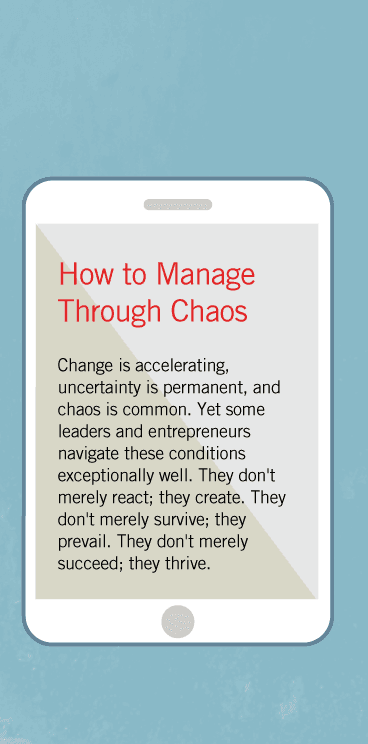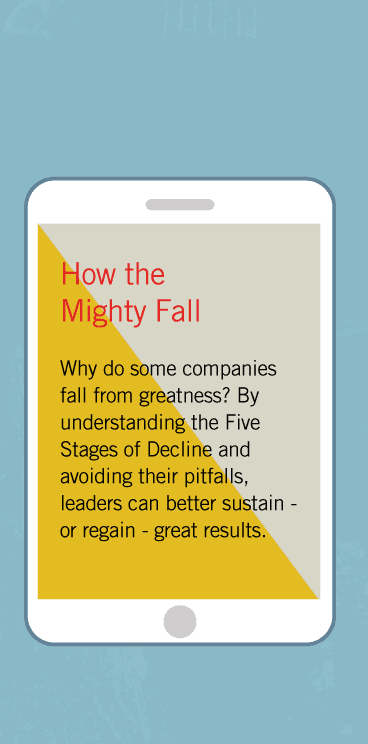Fast Company's Greatest Hits:
Ten Years of the Most Innovative Ideas in Business
Meanwhile, Webber's colleague Bill Taylor, who had previously worked with consumer advocate Ralph Nader, had already quit his editing job at HBR. "I felt myself drawn to the creative intensity—the raw animal spirit-coming from places like Silicon Valley and Asia," reflected Taylor. "And I wanted to create a magazine that would be its voice."
Spurred on by Taylor, Webber considered his options. He could stay in his job, successful and unhappy. Or he could join Taylor, and if he failed—well, what's the worst that could happen? He could always get another job. Sure, once you've had a taste of freedom, it's hard to work for someone else; but it's not like you're going to die. "I had to give it a try. If I didn't go then, I'd never go, and I'd wonder for the rest of my life" recalls Webber. "There was a part of me that said, 'Your whole life has been a preparation for this moment.' "
Bill Taylor and Alan Webber perceived three big trends:
Trend No. 1: digitalization. Powerful devices would make computing both more personal and more social.
Trend No. 2: globalization. Russians, Americans, Chinese, Brazilians - people from everywhere-would embrace and share the best ideas, independent of national origin.
Trend No. 3: democratization. Baby-boomers hitting their fifties would accelerate the diffusion of power in society.
Taylor and Webber believed that no magazine had taken the lead in these trends, and they founded Fast Company. Yet their genius came not in reporting on these trends, but in the magazine's mission to shape the conversation, and thereby shape a generation, much the way Rolling Stone did with the rock 'n roll counterculture. "Every great magazine serves a noble purpose," reflects Bill Taylor. "We wanted to be about how people—and business at its best—can make a positive impact on the world."
And so, in November 1995, Fast Company hit the newsstands, seeking to ignite conversations that would have a catalytic impact. People discovered the magazine and became passionate about its message. The freshness of hearing a successful CEO say, "Everything I thought I knew about leadership is wrong" or exploring, in "Free Agent Nation" the growing movement of people abandoning their jobs to carve their own paths caused people to read and reflect, and—most important-discuss. They ripped out pages and passed them around; they pasted text into e-mails and sent links; they met and talked in groups, and reconnected on the Web site. Fast Company did something rare in publishing; it created a community of readers.
Then something quite unfortunate happened: the Internet bubble. At the end of 1995, the NASDAQ stock index closed at just above 1,000. In the next five years, it multiplied more than four times, with some dot-com IPOs posting first-day price increases of more than 300 percent. Of course, the bubble was destined to burst—but not before it would corrupt the whole idea of the new economy. Fast Company achieved the success it wished for: it experienced explosive growth and Webber and Taylor and their backers were able to sell the magazine at an Internet valuation in 2000. Since then, the magazine's financial fortunes have mirrored the aftereffects of the bubble, further reinforcing the notion that Fast Company was nothing more than a mouthpiece of the dot-com era—an unfortunate mischaracterization that I hope this book helps to erase.
I entered Fast Company's story in 1999, with a call from Alan Webber. "I'm sitting here watching what's happening, and I'm thinking, 'Did I blink and miss something?' " he said. "We used to talk about building companies, changing lives, having an impact, creating a better workplace, realizing potential—and now all people want to talk about is flipping companies, getting rich and cashing out." Alan asked if I would pen an essay, which became "Built to Flip," published in March 2000. Together, we crafted an all-out attack on the "It's OK to work just for money, so long as it's a lot of money—and, oh, by the way, I'm entitled to be rich" mentality that infected the late 1990s. Like a Zen master with a bamboo stick, Alan wanted to whack people on the head and say, "Wake up! You're missing the whole point!"
The point—that we should think about life, work and the connection between the two—needs to be resuscitated. Sifting through the best articles from Fast Company's first ten years, I see an underlying order to the chaos, captured in five basic premises that—while the bubble has come and gone—remain relevant:
Premise No. 1: Work is not a means to and end; it is an end in itself. If you create work you are deeply passionate about—because you love to do it and you believe in what it can contribute—the very act of work can become a source of sanctuary and meaning.
Premise No. 2: If your competitive scorecard is money, you will always lose. There are two ways to be wealthy. One is to have a huge amount of money. The other is to have simple needs. What is your answer to "How much is enough?" As professor Michael Ray of Stanford taught: comparison is the primary sin of modern life.
Premise No. 3: Business is a mechanism for social change—for good and ill. If you build a great enterprise, it will have an impact—on its people, on its customers, on the communities it touches. The question is: will that impact be positive? How will the world be better off, beyond wealth creation?
Premise No. 4: Entrepreneurship is a life concept, not just a business concept. There are two approaches to life. One is to buy the "paint by numbers kit" and stay within the lines. The other is to start with a blank canvas and try to paint a masterpiece. You can be an entrepreneur without starting a company, by creating a path uniquely designed to you.
Premise No. 5: Performance is the fundamental requirement. Good intentions mean nothing without great performance. Businesses must deliver results. Nonprofits must deliver on mission. People must deliver on responsibilities. There is no room for those who simply cannot perform.
Reading the articles collected in this wonderful book is like listening in on a series of fascinating conversations with some of the best minds and creative thinkers of a generation. And not just about business. "We wanted to do for this new era what Fortune did for the industrial era," explains Webber. "I remember coming across an early issue of Fortune from 1930—volume 1, issue no. 2—and there was an article by Ernest Hemmingway on the economics of bullfighting. And I realized something Fortune realized in 1930: a great business magazine is about life, about society, about economics, about human stuff good and bad—about the types of things Ernest Hemingway would write about. We wanted to be the business magazine that if Hemmingway were around today, he would want to write for us."
I suspect Hemingway would have loved to write for Fast Company because of one underlying ethos: passion. Running through the best of the magazine like a red thread is the idea that nothing great ever happens without passion. My favorite Fast Company writers are passionate—passionate about ideas, passionate about their work, passionate about correcting the wrongs in the world, passionate about a cause, passionate about values, passionate about performance. Some of these are businesspeople, but they are just as likely to be Senator John McCain in his article about courage, Major Tony Burgess and how he "fell in love with leading" in "Grassroots Leadership: U.S. Military Academy," or coach John Smith and his systematic approach to helping 100 meter runners shave a hundredth of a second in "Stop Time." Just like a Hemingway story, these articles can be enjoyed as much today as when first published. Read. Absorb. Reflect. Enjoy. Renew.
But above all, follow the underlying message: If you're not deeply passionate about what you're doing, then it's time to change. We live short and die long, in the words of Dr. Walter M. Bortz, and the urgency of getting on with what we are meant to do with this one short life increases with each passing day.
Jim Collins
Boulder, Colorado
December 1, 2005






